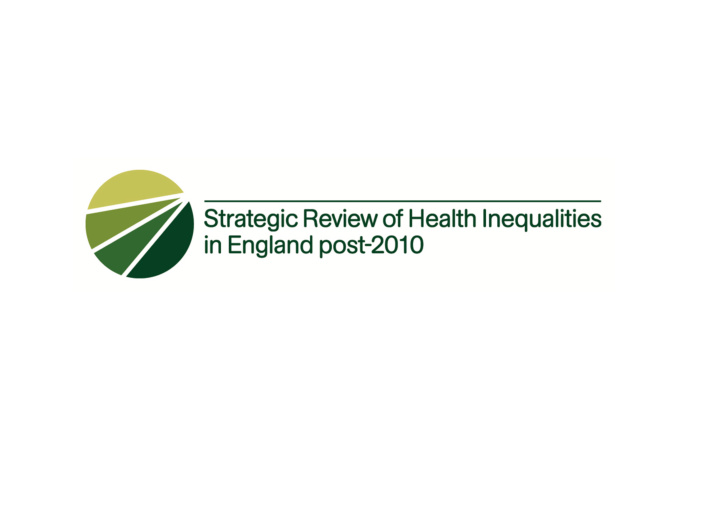



Key themes Reducing health inequalities is a matter of fairness and social justice Action is needed to tackle the social gradient in health – Proportionate universalism Action on health inequalities requires action across all the social determinants of health Reducing health inequalities is vital for the economy – cost of inaction Beyond economic growth to well-being
Cost of Inaction • In England, dying prematurely each year as a result of health inequalities, between 1.3 and 2.5 million extra years of life. • Cost of doing nothing • Action taken to reduce health inequalities will benefit society in many ways. It will have economic benefits in reducing losses from illness associated with health inequalities. Each year in England these account for: – productivity losses of £31-33B – reduced tax revenue and higher welfare payments of £20-32B and – increased treatment costs well in excess of £5B.
POLICY OBJECTIVE A Give Every Child the Best Start in Life
Policy Objective A Recommendations • Increase proportion of expenditure allocated to early years • Support families (pre and post natal, parenting, parental leave, transition points) • Quality early years and outreach
POLICY OBJECTIVE B Enable all young people, children and adults to maximise their capabilities and take control over their own lives
Policy Objective B Recommendations • Continued priority to reducing inequalities in education outcomes • Prioritise inequalities in life skills (whole child approach, full service schools, workforce) • Increase access and use of quality lifelong learning (16-25 yr old support, work based learning, non-vocational courses)
POLICY OBJECTIVE C Create Fair Employment and Good Work for All
Policy Objective C Recommendations • Prioritise active labour market programmes • Quality of jobs improved (equality legislation, well being, stress and mental health at work) • Security and flexibility of employment (retirement and people with poor health and caring responsibilities)
POLICY OBJECTIVE D Ensure Healthy Standard of Living for All
Policy Objective D Recommendations • Minimum Income for healthy living • Remove cliff edges • Review taxation and welfare system
POLICY OBJECTIVE E Create and develop healthy and sustainable places and communities
Policy Objective E Recommendations • Combining policies to mitigate climate change and health (active travel, green space, food environment, energy efficiency) • Integrate planning, transport, housing environmental and health systems • Regeneration based on reducing social isolation and remove barriers to action
POLICY OBJECTIVE F Strengthen the Role and Impact of Ill Health Prevention
Policy Objective F Recommendations • Prioritise investment – up from 4% of NHS budget • Medicalise drug treatment • Gradient in smoking, obesity and alcohol • Public Health - social determinants
Delivery and Measurement • Annex 2: Indicators of progress and targets • Delivery systems – partnerships, local empowerment, LSPs
WEBSITE www.marmotreview.org
Recommend
More recommend